Since its premiere on the small screen four years ago, History Channel’s Vikings became one of the most popular shows and gained a huge following around the world.
Critically acclaimed series following the adventures of Ragnar Lothbrok and his Viking brethren as they raid foreign kingdoms to the west and the south is still doing well and already got renewed for the 5th season.
That being said, Vikings also received some criticism for its historical inaccuracy. In all fairness, the producer, Michael Hirst already stated many times that historical accuracy was not the main focus of the series and they have been/will be adding fantasy elements to it.
I have already examined the real stories of main characters on the history section of this web site in detail but there is more to it than Ragnar Lothbrok and his sons. So, here is a much more comprehensive fact or fiction checklist for History Channel’s Vikings.
Table of Contents
Ragnar Lothbrok – Is Ragnar Lothbrok Real ?
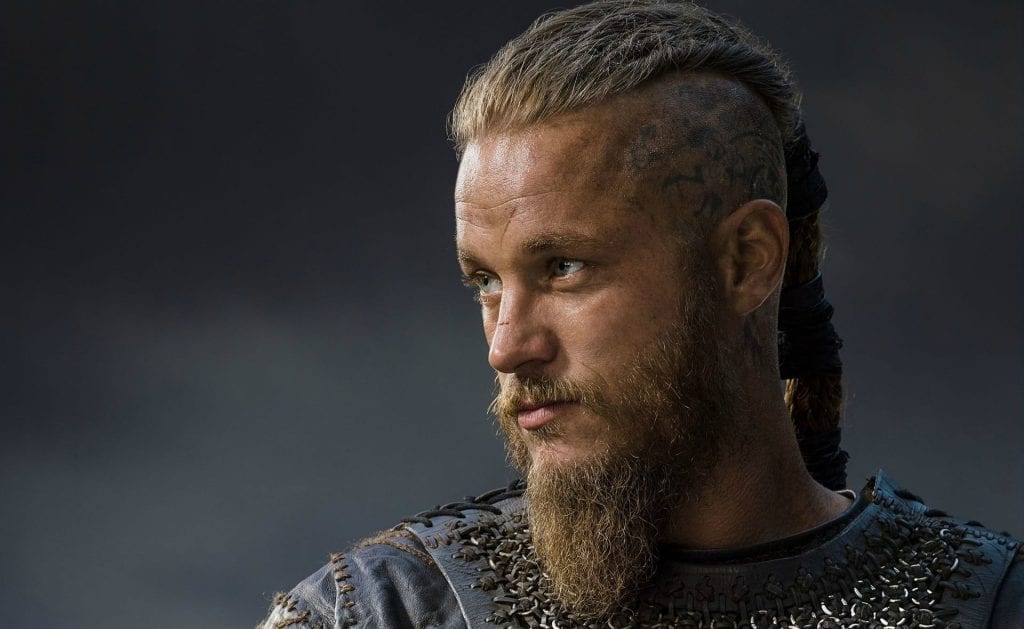
Let us start with the king. Ragnar Lothbrok/Ragnar Lodbrok (played by actor Travis Fimmel) was a legendary Viking hero and the father of some of the most significant names in Norse history such as Björn Ironside and Ivar the Boneless.
His name is mentioned in many sagas regarding the age some of which include mythical elements (like the one in which he kills a huge, poison-breathing serpent ).
In addition to that, stories about Bjorn Ironside, Ivar the Boneless, Ubbe, Hvitserk and Sigurd Snake-in-the-Eye who raided England, France and other lands to the south refer to them as “the sons of Ragnar Lothbrok”.
(SPOILERS from here on for people who have not watched season 4 yet)
In fact, Ragnar Lothbrok’s death in the hands of King Aella plays an important role in triggering the Viking invasion of England.
On a side note, there are some theories suggesting Ragnar Lothbrok was not only one man and sagas dedicated to him were collections of oral stories about different Viking warlords who raided England and France.
Fore more information, here is the detailed article regarding Ragnar Lothbrok, his life and death, his wives and children.
Shieldmaiden Lagertha
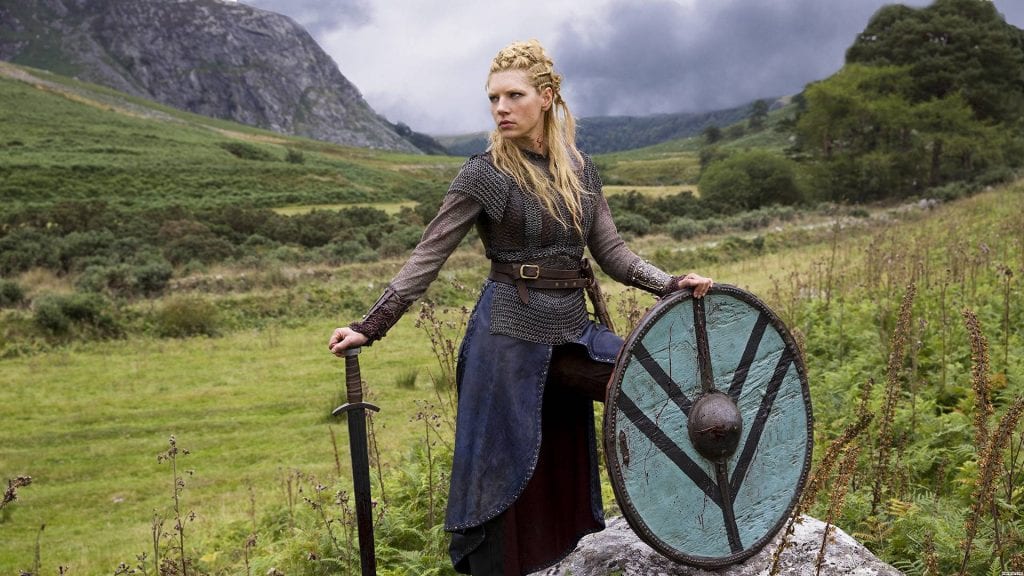
A fan-favorite character in the show, the brave warrior, Shieldmaiden Lagertha (played by actress Katheryn Winnick) was one of Ragnar Lothbrok’s wives in real life just as it is depicted in the series. There is not much information regarding her life but she was known to be a woman without fear who fought beside Ragnar and his men to escape captivity.
Some accounts of the ages identify Lagertha with Thorgerd, a goddess with magical powers.
She has a son and two daughters from Ragnar Lothbrok, however, that son is not Bjorn Ironside (her son was named Fridleif) and there are some other differences between the real life historical figure and Lagertha in History Channel’s Vikings.
Click here to read more about Lagertha.
Shieldmaidens: Real or Not?
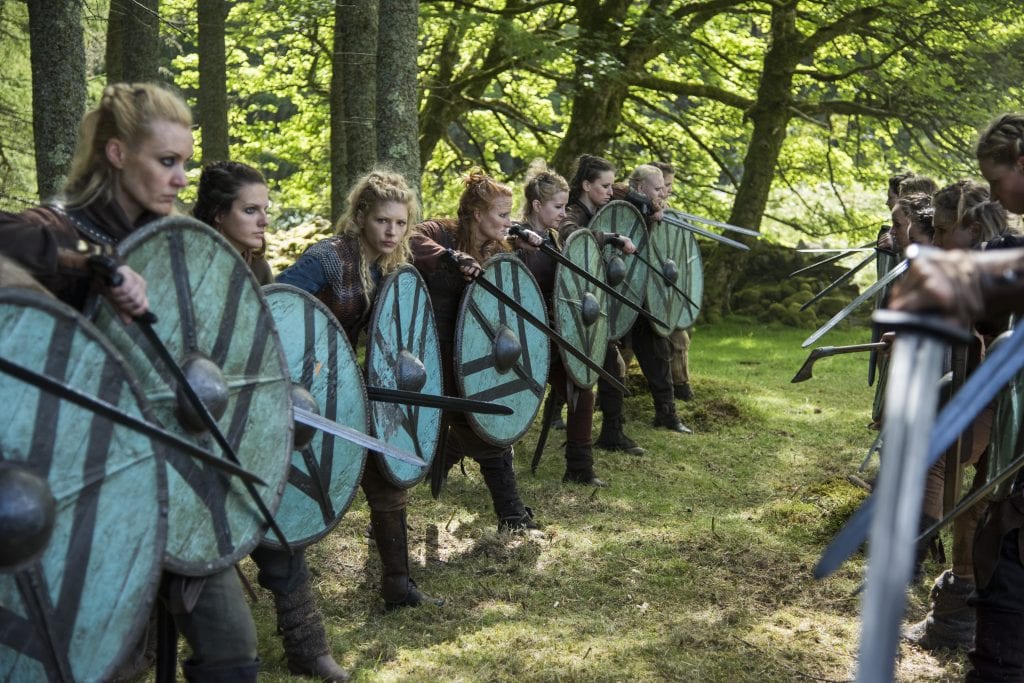
Since the first moment Lagertha and her band of shieldmaidens appeared on the show, many fans have been wondering about the existence of real shieldmaidens in Norse history.
There are not that many written accounts regarding shieldmaidens but they exist in sagas like Hervarar saga ok Heiðreks , Vǫlsunga saga, Bósa saga ok Herrauðs and Hrólfs saga Gautrekssonar.
Women trained as regular warriors to join Viking men in war is still a highly-disputed subject among historians.
Brynhildr, princess Thornbjǫrg, Princess Hed , Vesna, Veborg and Lagertha are shieldmaidens mentioned in sources regarding Norse history and mythology.
Rollo, Ragnar Lothbrok’s Brother (Or Not?)
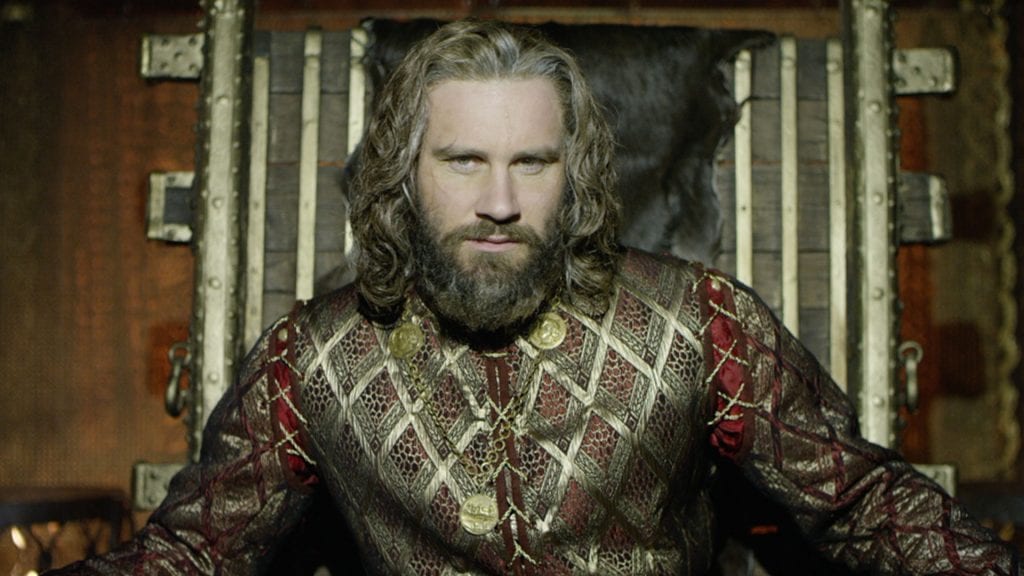
Rollo the Viking Duke of Normandy is as real as it gets. That being said, the real life historical figure largely differs from the character depicted as Ragnar Lothbrok’s brother in the series.
In real life, Rollo the Viking (played by actor Clive Standen in the series) became the first ruler of Normandy. His descendants including William the Conqueror became key players as royalty in courts of European kingdoms and changed the course of history.
Was Rollo Ragnar Lothbrok’s Brother? He most definitely was not.
You can read the very detailed article about Rollo here.
Floki
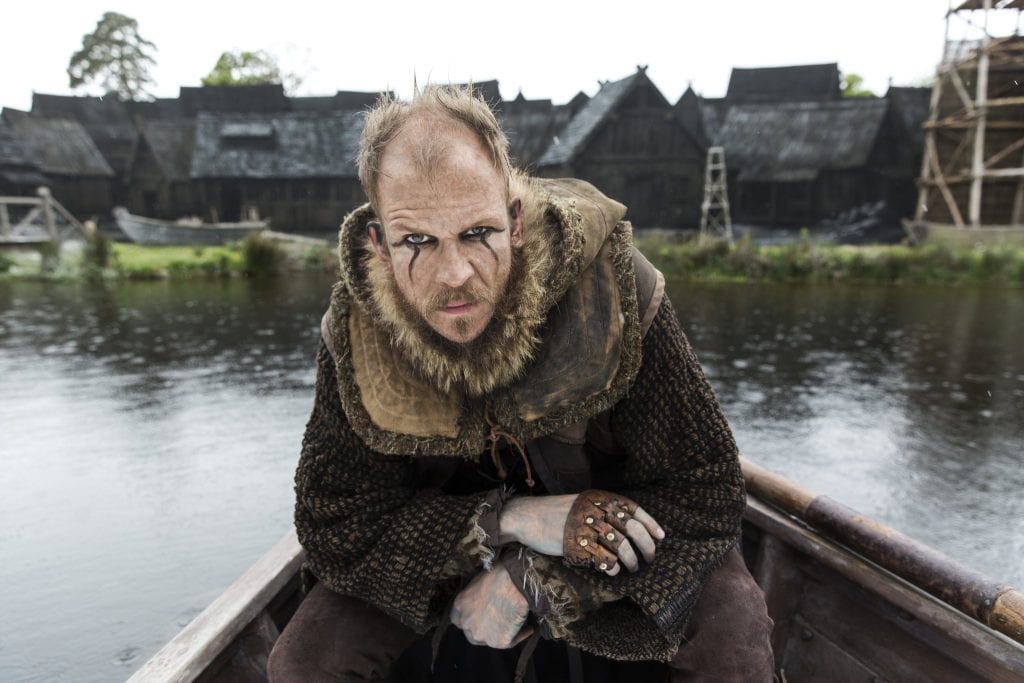
As one of the most colorful characters of the TV series, Ragnar Lothbrok’s best friend, Floki the boat builder is also based on a real Viking in history.
However, just like Rollo, Floki’s character (played by actor Gustaf Skarsgård) largely differs from the historical figure and probably was added to the show to spice it up.
In real life, a Viking named Hrafna-Flóki Vilgerðarson is known as the first Norsemen who deliberately set sail to Iceland.
His nickname “Hrafna” means “raven”. According to the legend, he had three ravens with him during his journey to Iceland and those ravens helped him find the island.
Having said that, there are no accounts associating Hrafna-Flóki Vilgerðarson with Ragnar Lothbrok or any other characters in the show.
For more information about our favorite boat builder, here is the article regarding Floki.
Athelstan
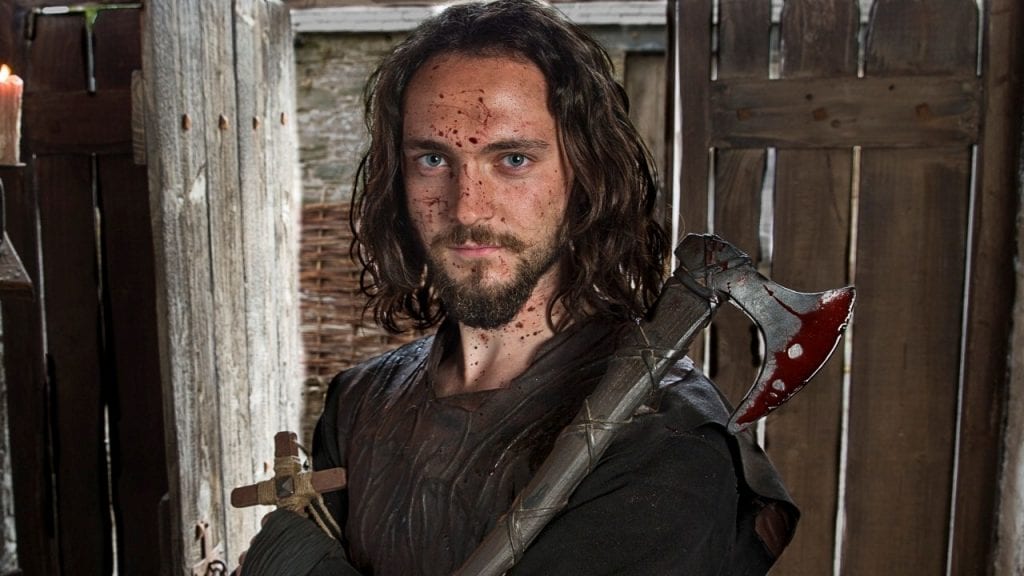
A fan-favorite character loved by many, Athelstan, the man of conflicts is a fictional character added to the show (played by actor George Paul Blagden).
The priest did play a key role for the series as he was an important part of Ragnar Lothbrok’s story but that is all there is.
There might have been many exchanges of religious knowledge between pagans and Christians at the time. However, neither Anglo-Saxon accounts nor the limited sources regarding Ragnar Lothbrok and his sons mention a priest named Athelstan.
Aslaug/Kraka
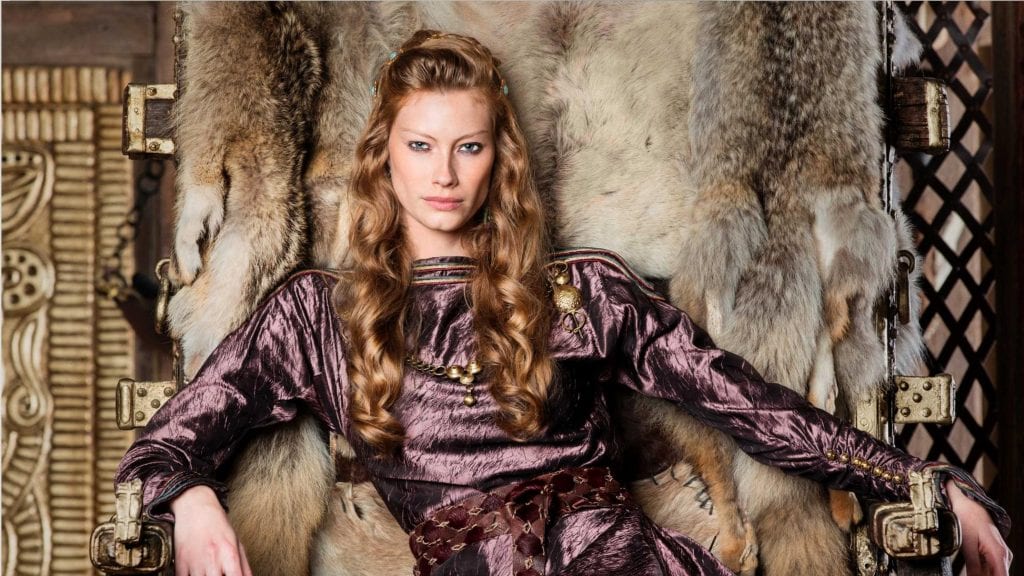
Aslaug (also known as Aslög, Kráka, Kraba or Randalin) was one of Ragnar Lothbrok’s wives (the third one according to most of the accounts) who gave him five sons, namely Ivar the Boneless, Björn Ironside, Ubba, Hvitserk and Sigurd Snake-in-the-Eye.
Aslaug (played by actress Alyssa Sutherland) was the daughter of Sigurd and Valkyrie Brynhildr according to Tale of Ragnar Lothbrok (Ragnars saga Loðbrókar), a thirteenth-century Icelandic saga about Ragnar Lothbrok and his sons.
Her meeting with Ragnar Lothbrok is pretty close to the one depicted in the show.
According to a legend, she had magical powers and she enchanted Ragnar Lothbrok’s shirt before he set sail for England and got captured by King Aella.
Legend has it that the snakes in the pit could kill Ragnar Lothbrok only after this enchanted shirt was removed.
As for what transpires between Lagertha and Aslaug in the TV show, nothing in somewhat limited accounts regarding these two historical figures suggests Lagertha and Aslaug were mortal enemies (and Lagertha did what she did).
The Seer
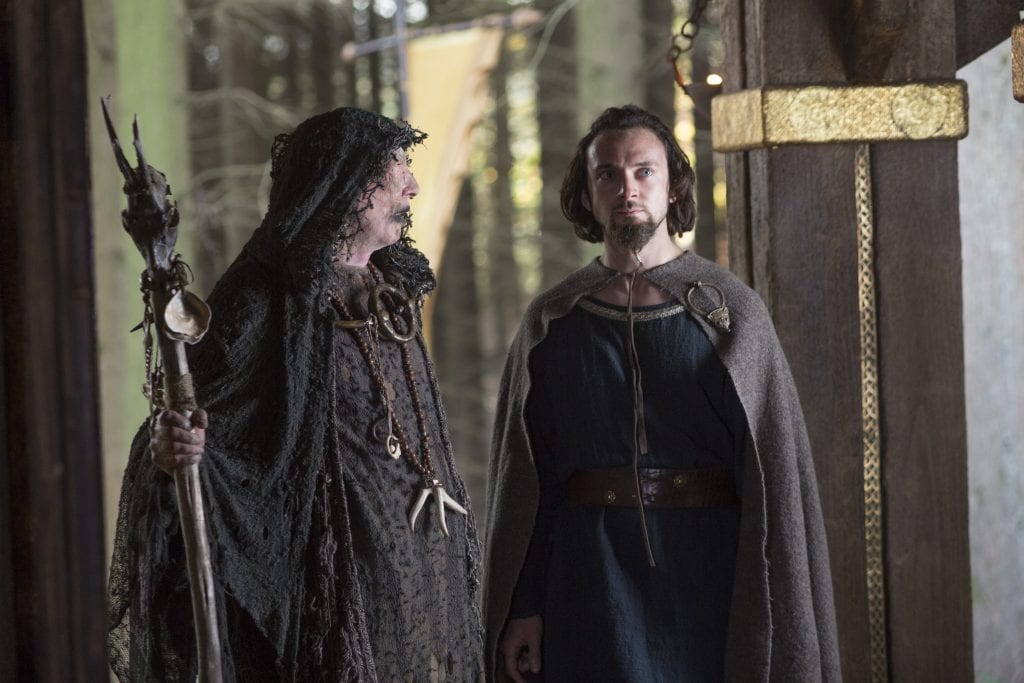
The mysterious character named the Seer in History Channel’s Vikings (played by actor John Kavanagh) is not based on a specific person in history but inspired by pagan sorcerers who practiced seiðr (seidh, seidr, seithr or seith), a kind of sorcery in Norse culture.
Seiðr was connected to Norse religion and it was associated with Norse gods, Odin and Freya in particular.
Björn Ironside / Björn Járnsíða
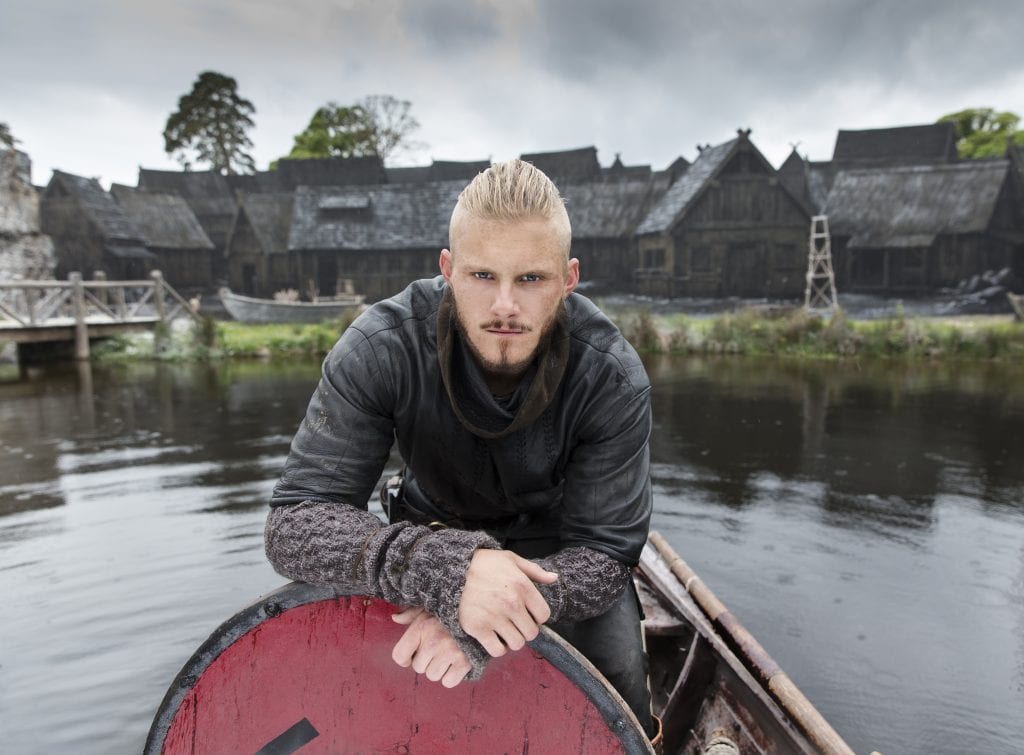
Depicted as the first son of Ragnar Lothbrok from Lagertha in the TV series, the character Bjorn Ironside is also based on a real life figure.
History Channel’s take on Björn Ironside (played by actor Alexander Ludwig) is way more different than what was recorded about him in the historical accounts though.
Real Björn Ironside is the son of Ragnar Lothbrok and Aslaug/Kraka not Lagertha. Also, he is mentioned as the second oldest son after Ivar the Boneless.
He becomes a very famous Viking warlord as one of the commanders of the Great Heathen Army just like Ivar the Boneless and these two actually overdo the achievements of their father.
Read about Björn Ironside, his adventures and raids across Mediterranean Sea and North Africa and his death here.
Ivar the Boneless
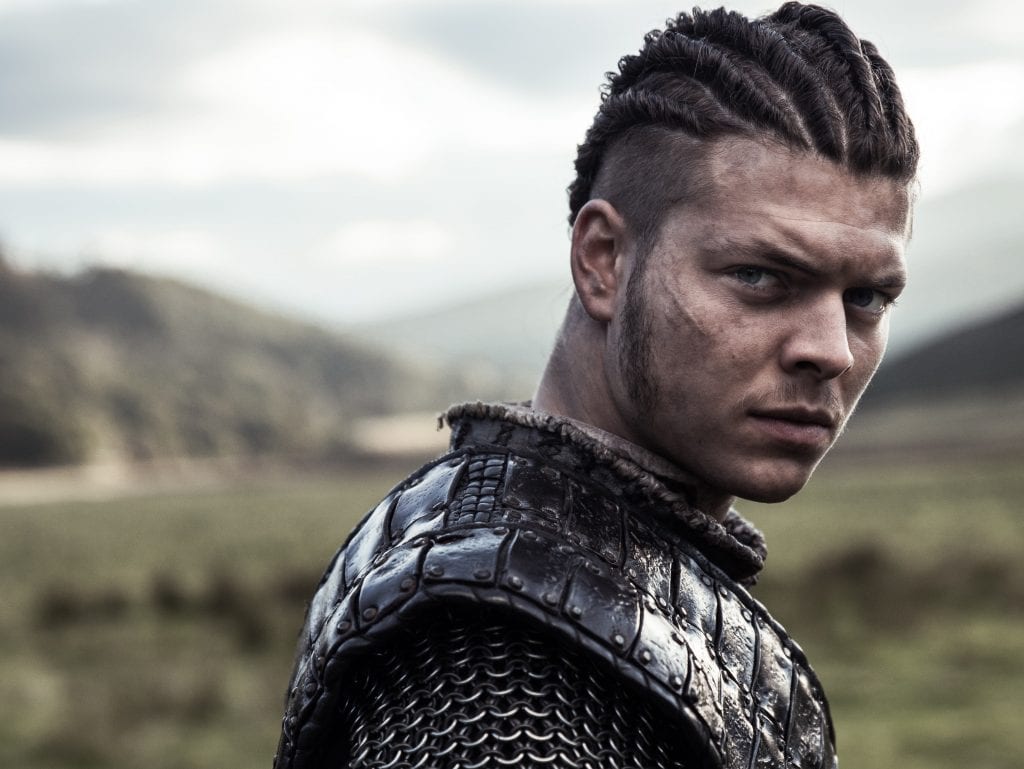
Ivar the Boneless, the character that became a fan-favorite in season 4 is also based on a real-life historical figure.
Ivar the Boneless (played by actor Alex Høgh Andersen) was one of the commanders of the Great Heathen Army that invaded England and raided many other kingdoms. Known as the wisest one among Ragnar Lothbrok’s children, Ivar was a great strategist and that was a key factor for the Great Heathen Army’s fast progress in England.
If you would like to learn more about his life, disease, raids, achievements and death, click here to read our article on Ivar the Boneless, Ragnar Lothbrok’s son.
Ubba/Ubbe/Husto
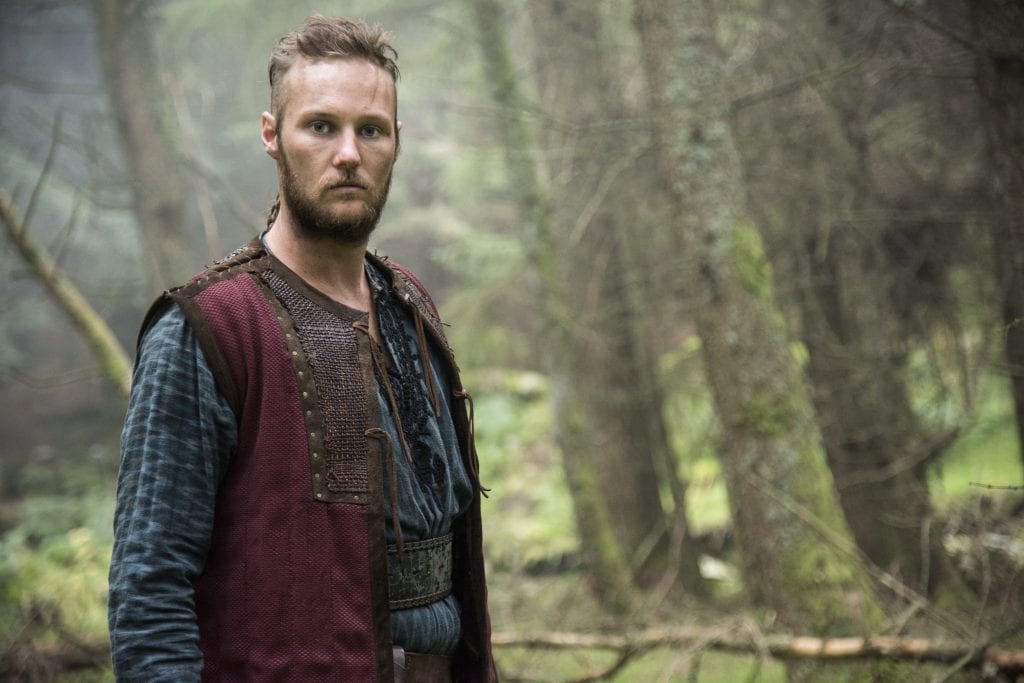
Ubba was one of the commanders of the Great Heathen Army that invaded England. During the invasion, he fought beside his brother Ivar the Boneless and other Viking kings including Guthrum.
His name was also associated with the death/martyrdom of King Edmund who refused to deny his Christian faith and was killed by two Viking warlords.
According to some accounts, King Edmund was tortured and killed by Husto and Yngwar (Ivar). It is suggested that the name “Husto” here was a misreading of the name Hubba and could be Ragnar Lothbrok’s son, Ubbe (played by actor Jordan Patrick Smith).
Hvitserk
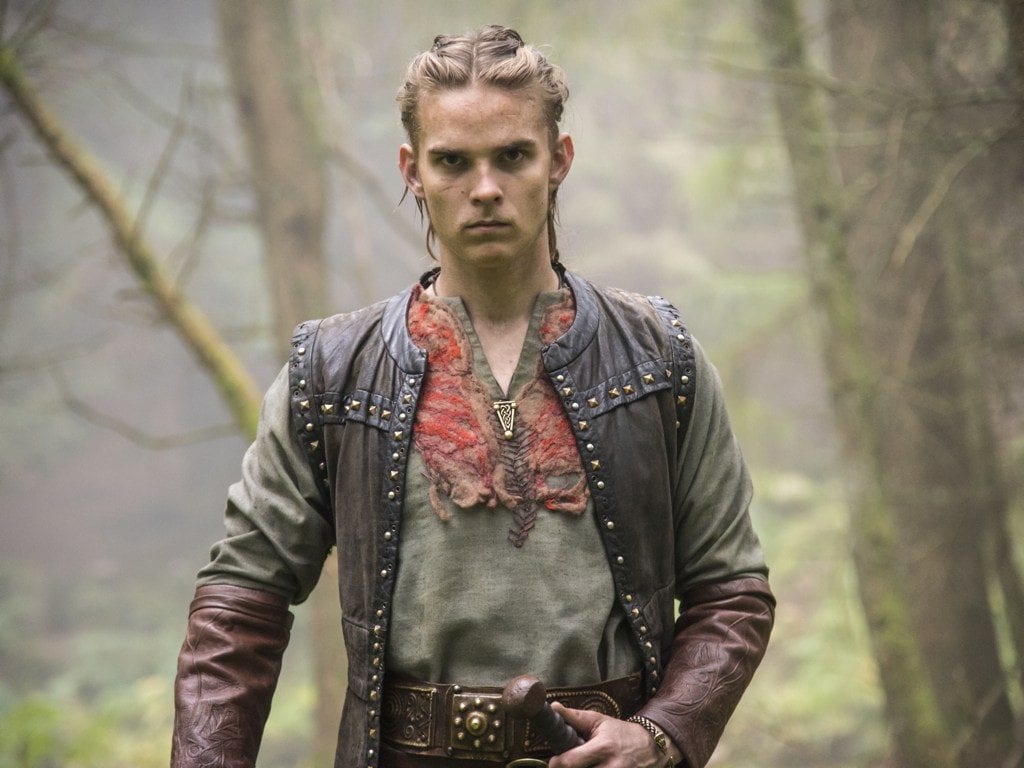
Hvitserk was one of the sons Ragnar Lothbrok had from Kraka/Aslaug. He avenged his father by killing King Aella of Northumbria with his brothers.
Hvitserk fought alongside his brothers as a part of the Great Heathen Army. He is considered to be the same person with Halfdan Ragnarsson by some historians as these two names never seem to have been used in the same account.
Hvitserk (played by actor Marco Ilsø in the series) went on raiding Gardarike (the name given for the Kievan Rus states of the time) after avenging Ragnar Lodbrok but he was beaten and executed by his enemies. According to the legend, he was asked about how he would like to die and he chose to be burned alive.
Sigurd Snake-in-the Eye
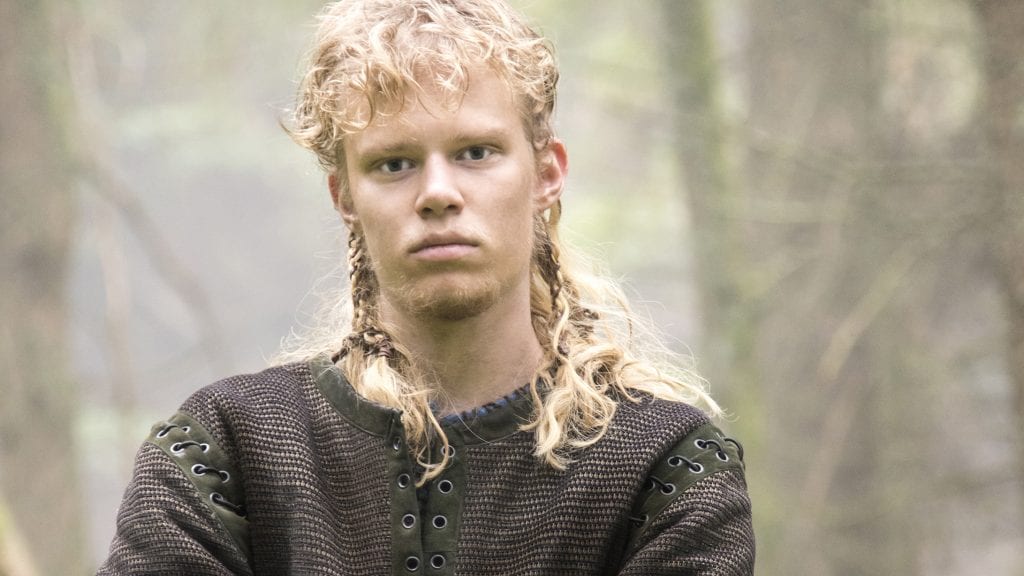
Sigurd Snake-in-the Eye was one of Ragnar Lothbrok and Aslaug’s sons who was told to be born with an ouroboros mark in his left eye.
Some accounts suggest that Aslaug wanted to marry Ragnar Lothbrok and revealed him her noble origins (which she had to keep secret until that time). She told him that she was the daughter of Sigurd, the legendary Viking hero who killed the dragon named Fafnir.
Aslaug convinced Ragnar by telling him that she would bear him a child who would have the mark of Fafnir in one of his eyes. Sigurd (played by actor David Lindström in Vikings) actually had that kind of a mark in his left eye when he was born.
After avenging his father’s death alongside his brothers, Sigurd married King Aella’s daughter, Blaeja and had four children from her.
On a side note, what happened between him and Ivar the Boneless at the end of season 4 is purely fictional.
His descendants spread across Europe and ruled different regions according to The Tale of Ragnar’s sons.
King Ecbert
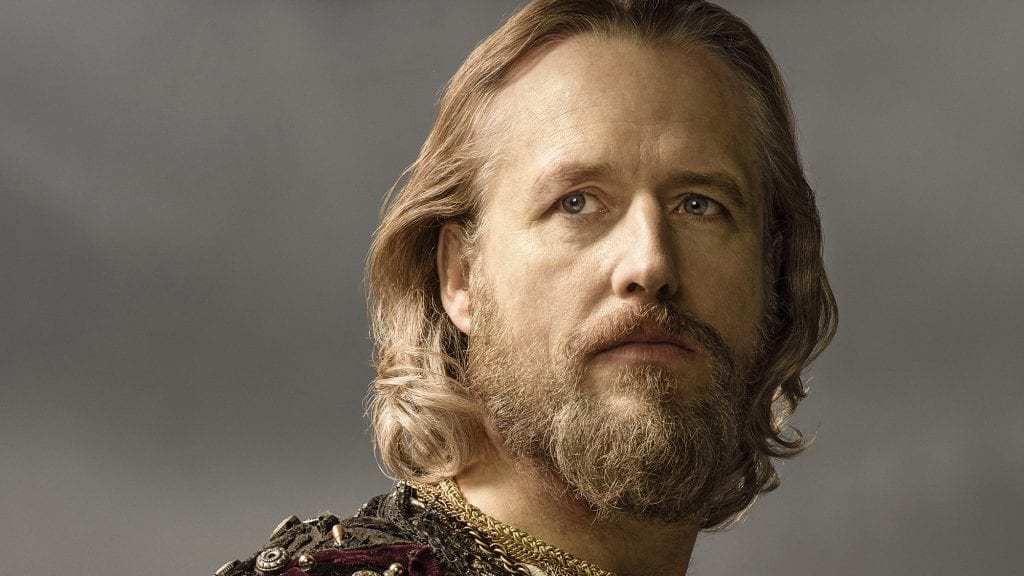
The character in History Channel’s Vikings named King Ecbert (played by veteran actor Linus Roache) is based on a real-life historical figure known by the name Egbert of Wessex (Ecgberht, Ecgbert, or Ecgbriht ). King Egbert of Wessex was one of the kings of England who lived in the 8th century (771/775-839).
Although King Egbert encountered Vikings and successfully defended his lands against them, there are no records of Ragnar Lothbrok meeting King Egbert and becoming friends with him.
The real King Egbert conquers the kingdoms of Mercia and Northumbria and dies in 839. His son Æthelwulf suceeds him.
What King Egbert did at the end of season 4 is fictional and inconsistent with the real events in history.
Prince Æthelwulf
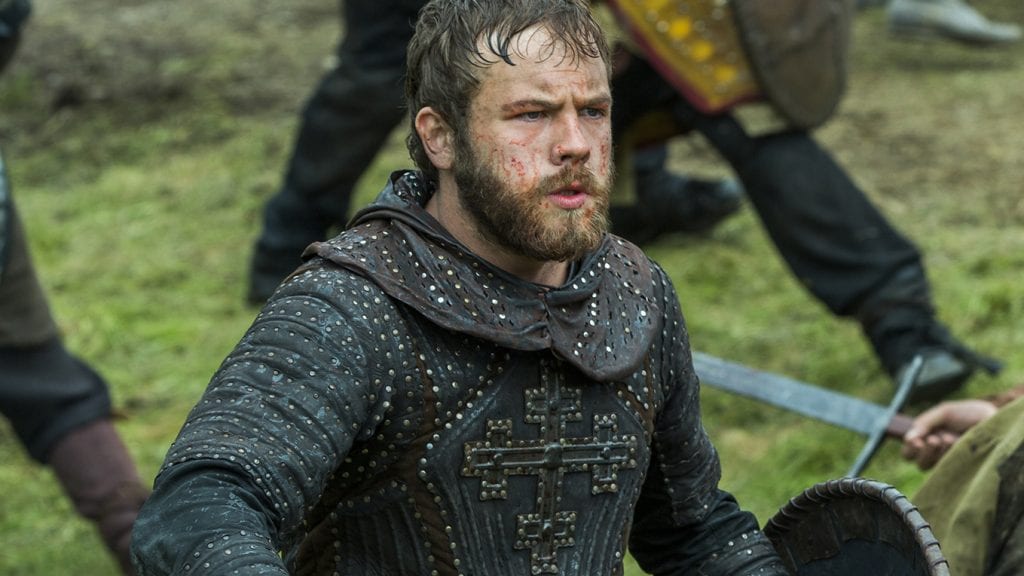
History Channel’s take on Æthelwulf in Vikings is pretty accurate compared to other characters. Æthelwulf/Aethelwulf (played by actor Moe Dunford) is based on a historical figure who actually did go on a pilgrimage with his son Alfred.
In real life, Æthelwulf inherits the West Saxon Kingdom from his dad and his lands are divided between his older sons after his death.
Some historians suggest that he was a pious man who lacked skills to rule and command an army while some historians suggest thathe was a very formidable commander who actually defended his lands against Vikings much better than most rulers in his time.
So far, the way of his marriage to Judith and his son Alfred are the only two significant differences between History Channel’s portrayal of Æthelwulf and the real-life Æthelwulf. Details are as follows.
Judith of Flanders
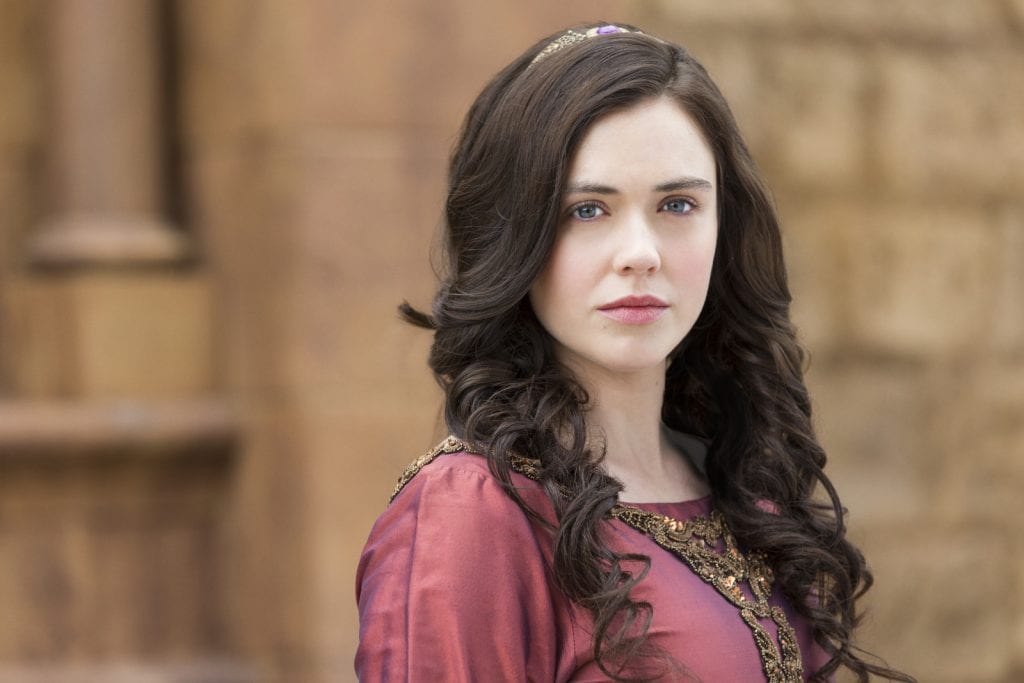
The character named Judith in Vikings (played by actress Jennie Jacques) is loosely based on a historical figure known as Judith of Flanders/Judith of France.
On the contrary to how it was depicted in the show, Judith was actually the daughter of the West Frankish King Charles the Bald and Ermentrude of Orleans. She was not the daughter of King Aella.
She did actually marry King Æthelwulf but she did not give him any children. After Æthelwulf’s death she married his oldest son Æthelbald.
After Æthelbald’s death, she left Wessex and went back to France where she married Baldwin of Flanders and gave him three sons.
She did not meet a priest named Athelstan and had a child named Alfred.
Alfred the Great – King Æthelwulf’s Son
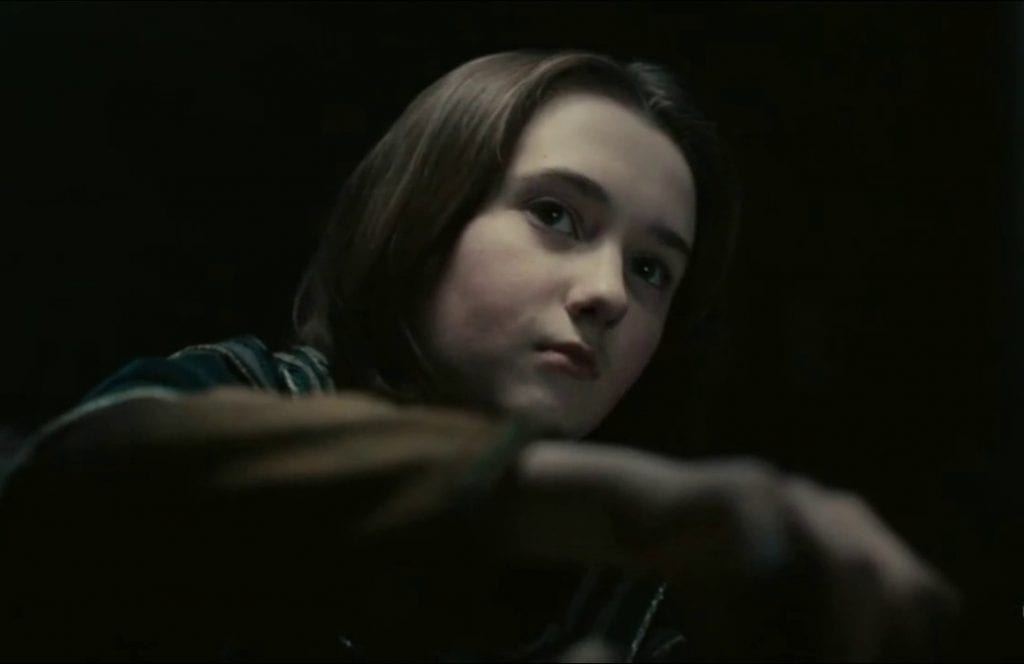
As another contradiction with the series, Alfred (who later became Alfred the Great) was not actually the son of Athelstan and Judith.
Alfred (played by actor Isaac O’Sullivan as a young boy) was the youngest son of King Æthelwulf and Osburh. He went on a pilgrimage to Rome with his father where Pope Leo IV anointed Alfred as a consul.
After all his brothers died, Alfred became the king and fought against Viking invaders.
Alfred and West Saxon forces saw defeat by the hands of Vikings but also won some battles. This involved a defeat by the army of Ivar the Boneless. So, Alfred and Ivar the Boneless did meet in real life (although it might not have been a personal meeting).
The war continued until Alfred eventually became the king and had a decisive victory against the forces led by Guthrum, the new leader of Vikings viciously attacking his kingdom. Alfred starved Guthrum and his men resulting in their surrender.
Guthrum and his men became Christians. Guthrum took the Christian name Æthelstan and ruled as a king in East Anglia.
Even after this significant victory, Alfred had to defend his lands against Vikings many times. He succeeded in this and became a very successful king in all meanings.
Alfred the Great made many reforms in the education system, legal system, military and financial structure of Kingdom of Wessex to become one of the most important names in Wessex history.
Alfred got married only once with Ealhswith, the daughter of Æthelred Mucil, a nobleman from Mercia. They had two sons named Æthelweard and Edward and three daughters named Æthelflæd, Ælfthryth and Æthelgifu (although some accounts mention a sixth child).
After he died in 899, his son Edward the Elder succeeded Alfred the Great. His cause of death is not known, however, he is assumed to have died of what is now known as Crohn’s disease as he suffered from a lifelong disease with very similar symptoms.
Earl Haraldson
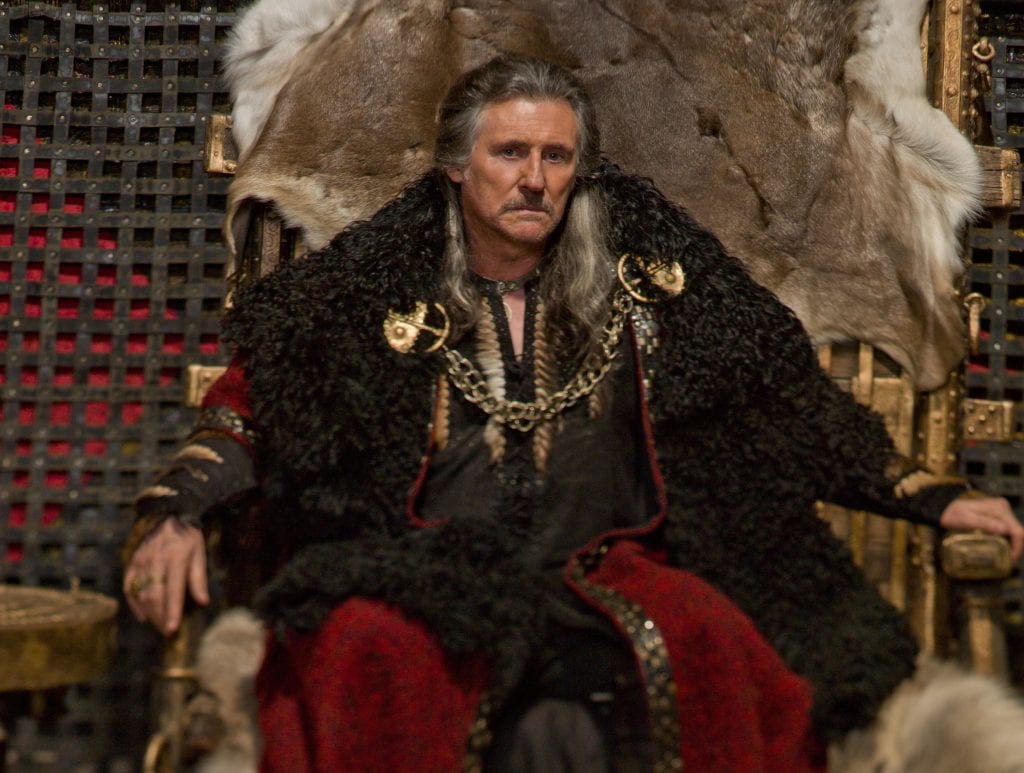
There is no historical account or saga mentioning Earl Haraldson (played by the talented actor Gabriel Byrne in History Channel’s Vikings). He probably is a purely fictional character.
Siggy Haraldson
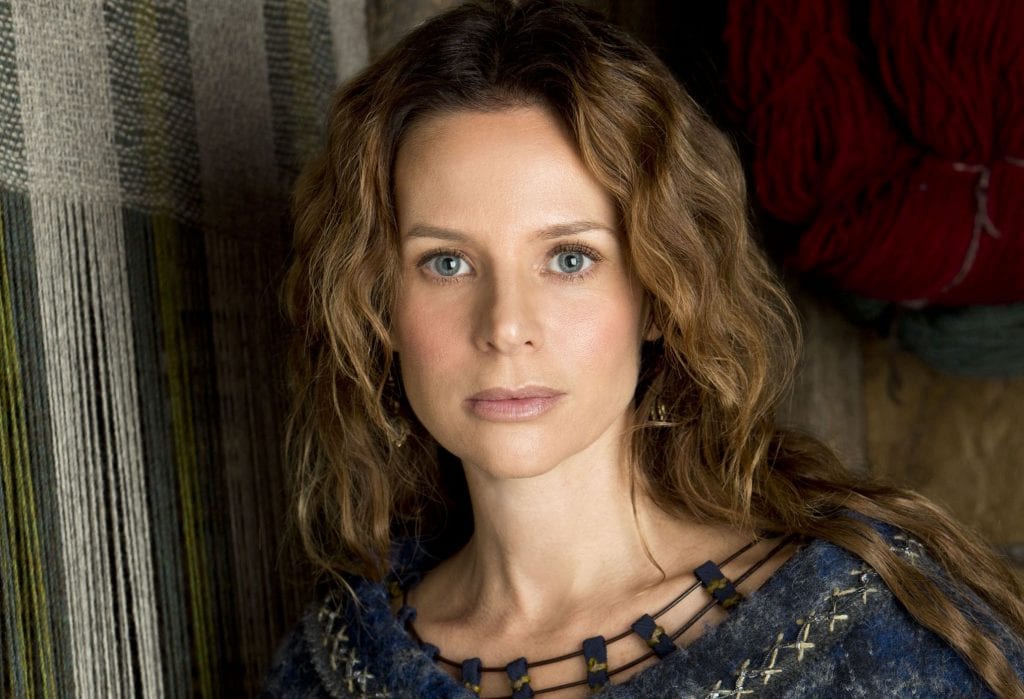
Same goes for Siggy Haraldson (played by actress Jessalyn Gilsig), Early Haraldson’s wife and Rollo’s lover. She is also a fictional character added to the show.
King Horik
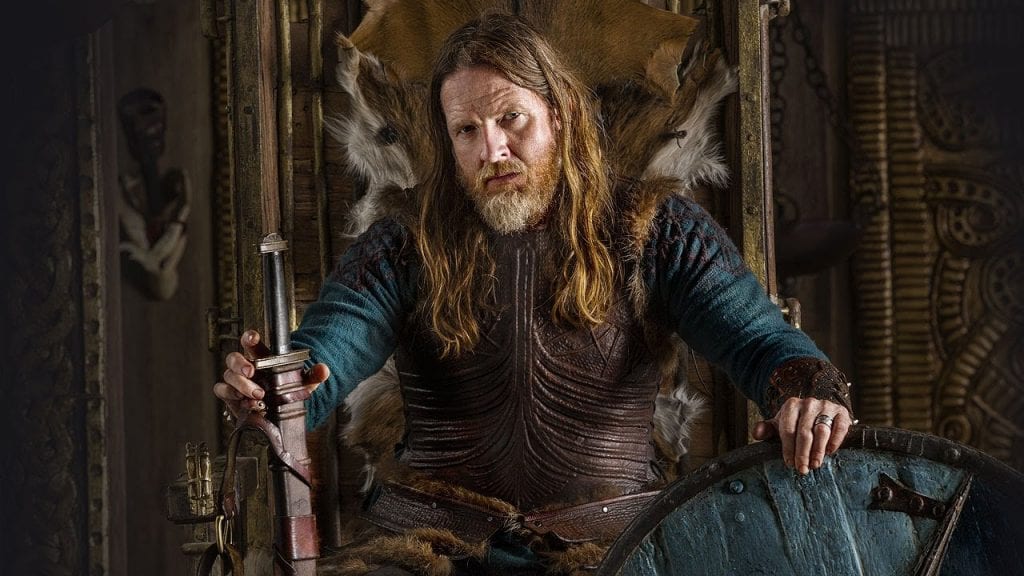
King Horik (Horik I) was a real-life historical figure who ruled as the sole king of Danes between 827 and 854.
He was the son of King Guthred who was known for raiding the Franco-German kingdom of Charlemagne.
Horik (played by Donal Logue in Vikings) carried on his father’s legacy and raided those lands what has now become modern Germany.
There is nothing in the historical accounts or sagas that associates King Horik with Ragnar Lothbrok or suggests the two have met.
In 854, Horik was killed by a nephew whom he sent into exile.
Earl Kalf
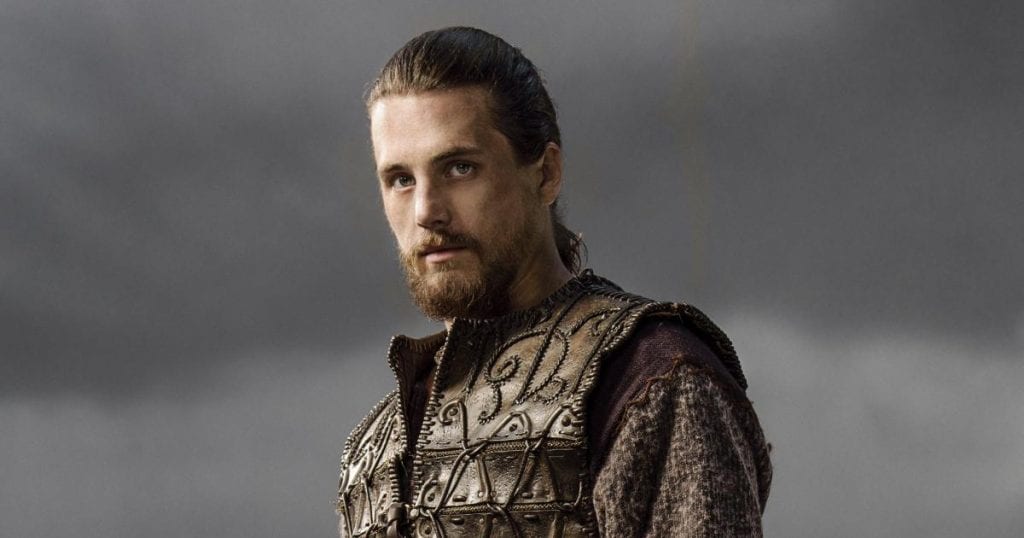
There is no mention of Earl Kalf anywhere in the accounts. He also is a fictional character created for Lagertha’s storyline (played by actor Ben Robson).
Harbard
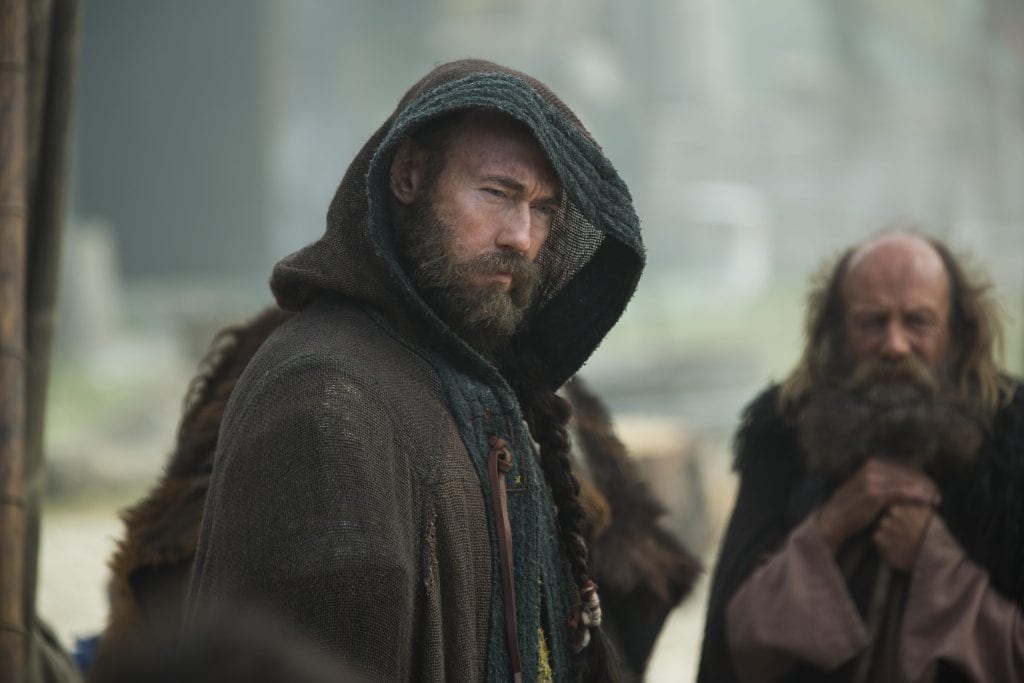
There are three theories regarding the mysterious character named Harbard, the wanderer who slept with Aslaug causing a rift between her and Ragnar.
One theory suggests that Harbard (played by actor Kevin Durand) was a conman who wanted people to think he was Odin to get his way. The second theory suggests that Harbard was actually Odin as Harbard was one of the names Odin used when he was among regular people. The third theory suggests that he was Loki the trickster god in Norse mythology and he tricked people into thinking he was Odin.
Gods in Norse mythology are not perfect and they are prone to make mistakes just like regular human beings. Therefore, it would not be too far-fetched to say the character named Harald might have actually been Odin or Loki personified.
King Harald Finehair
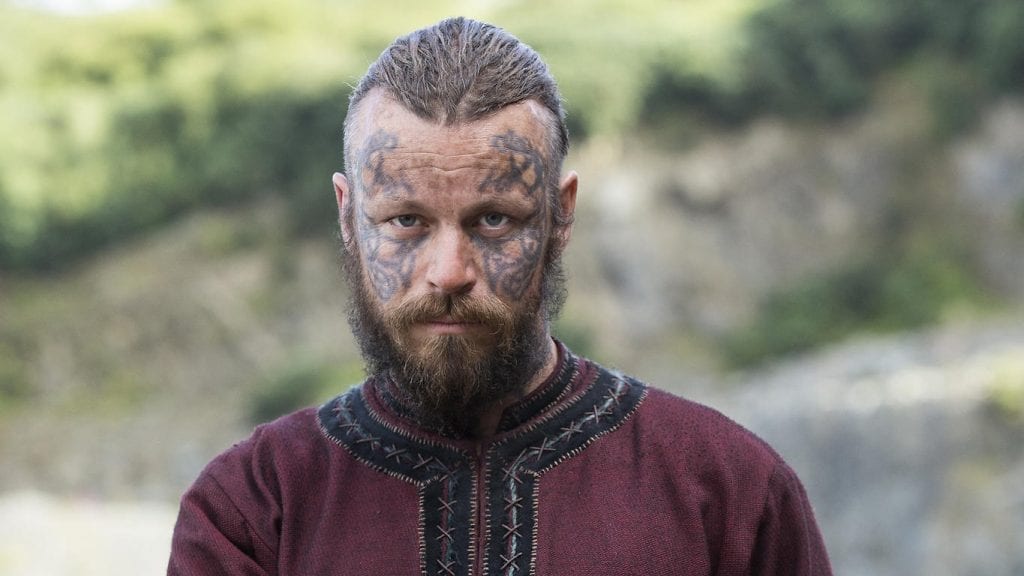
King Harald Finehair in History Channel’s Vikings is another character loosely based on a historical figure (played by actor Peter Franzén).
In real life, King Harald Fairhair/Finehair (Harald I of Norway, 850-932), the son of Halfdan the Black, was a Scandinavian king who was known to be the first king of Norway.
Although there are no accounts associating him with Ragnar Lothbrok and his sons, some accounts suggest that he was actually Rollo’s brother.
Halfdan the Black
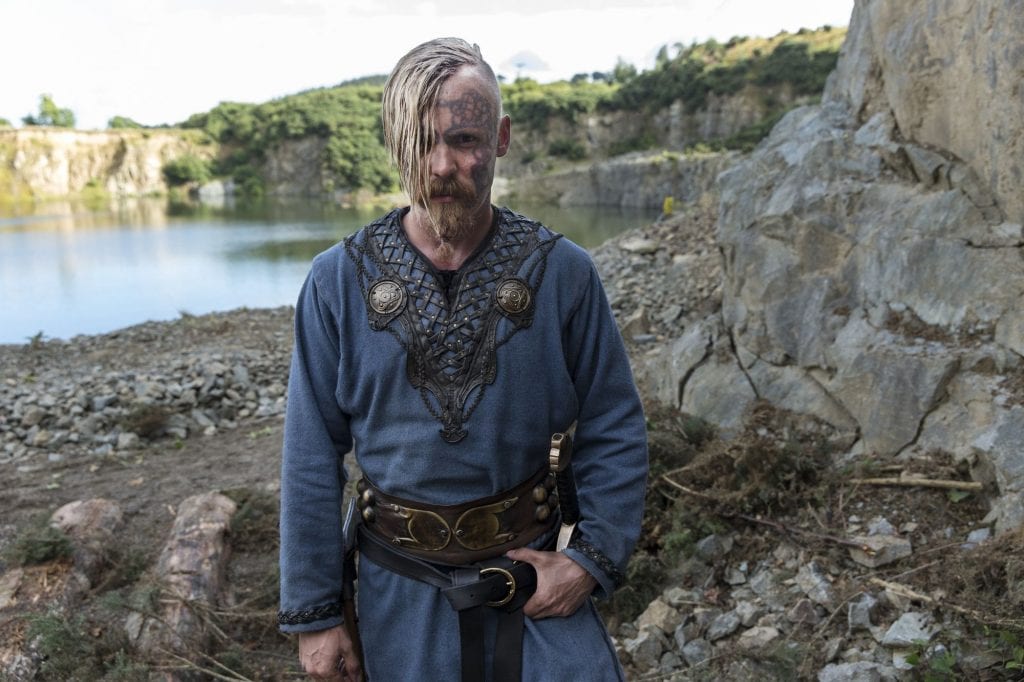
On the contrary to his depiction in the TV show, Halfdan the Black was not Harald Finehair’s brother. The real-life historical figure was actually the father of Harald Finehair.
Halfdan the Black (played by actor Jasper Pääkkönen in the series) was the king of Vestfold (modern day Norway) and belonged to the noble House of Yngling.
On a side note, some accounts mention Harald Finehair named one of his sons as Halfdan the Black (after his father).
Emperor Charles of West Francia
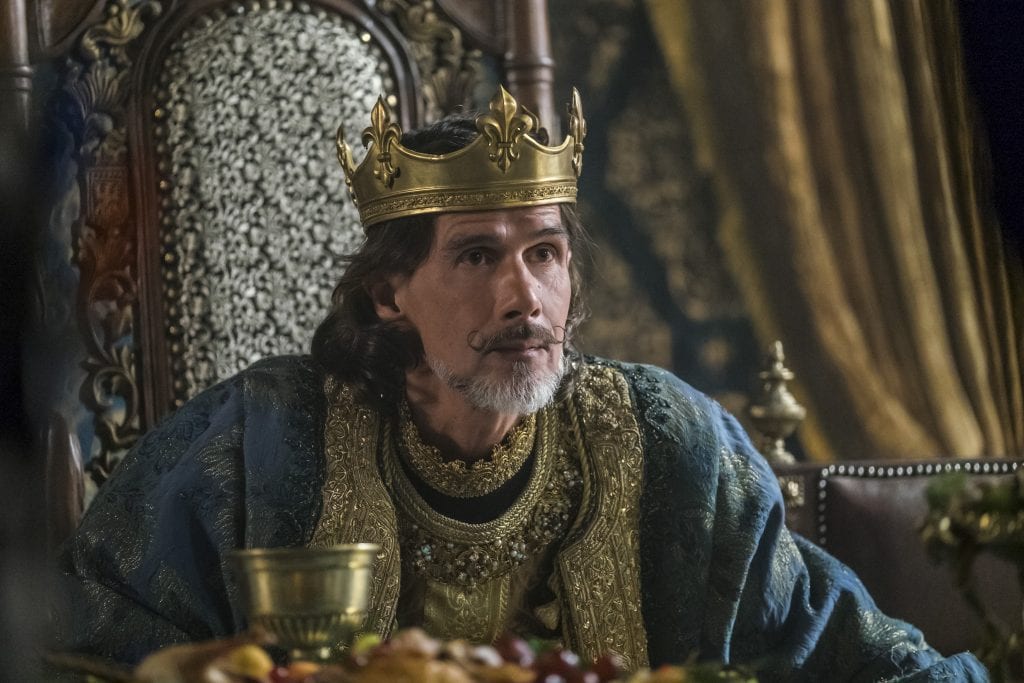
The character of King Charles (played by actor Lothaire Bluteau in the TV show) is also based on a real-life historical figure.
As one significant difference between the TV series and the history, West Francia, the kingdom of Emperor Charles, who was also known as Charles the Simple, was attacked many times by Vikings led by Rollo and other chieftains, not Ragnar Lothbrok.
In fact, the raids on Paris took place long after the first raids on the English kingdoms of Mercia, Northumbria and Wessex.
Charles the Simple signed the Treaty of Saint-Clair-sur-Epte with Rollo in 911 which made Rollo the Count/Duke of Normandy. This treaty made Rollo and his Viking brethren legitimate owners of lands in West Francia. Rollo did marry Charles’ daughter Gisla/Gisela of France as shown in the series.
Princess Gisla/Gisela of France
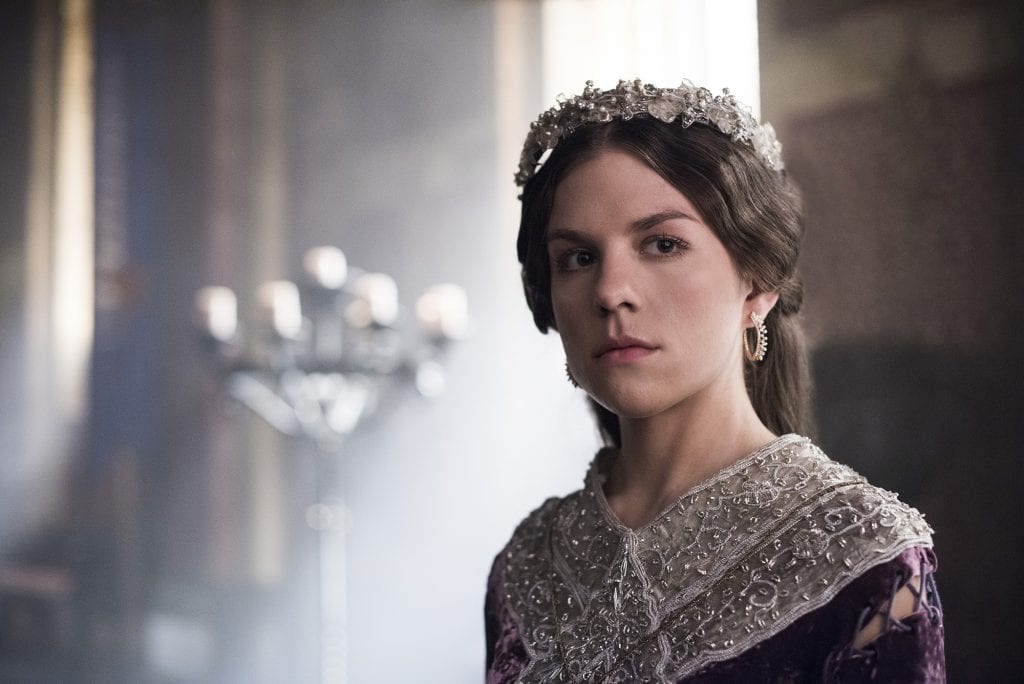
Princess Gisla, Rollo’s French wife in History Channel’s Vikings is based on Gisela of France, Charles the Simple’s daughter (played by actress Morgane Polanski in the series).
As part of the treaty between Emperor Charles and Rollo, Gisla actually marries Rollo but there is no evidence suggesting Gisla was a legitimate child of Charles the Simple. She would have been very young (5 years old) when her father asked her to marry Rollo since Emperor Charles married for the first time in 907.
Also, there are no records suggesting she had any children from Rollo. All of Rollo’s children are from his wife Poppa of Bayeux and another woman whom he might have married in Scotland.
Count Odo
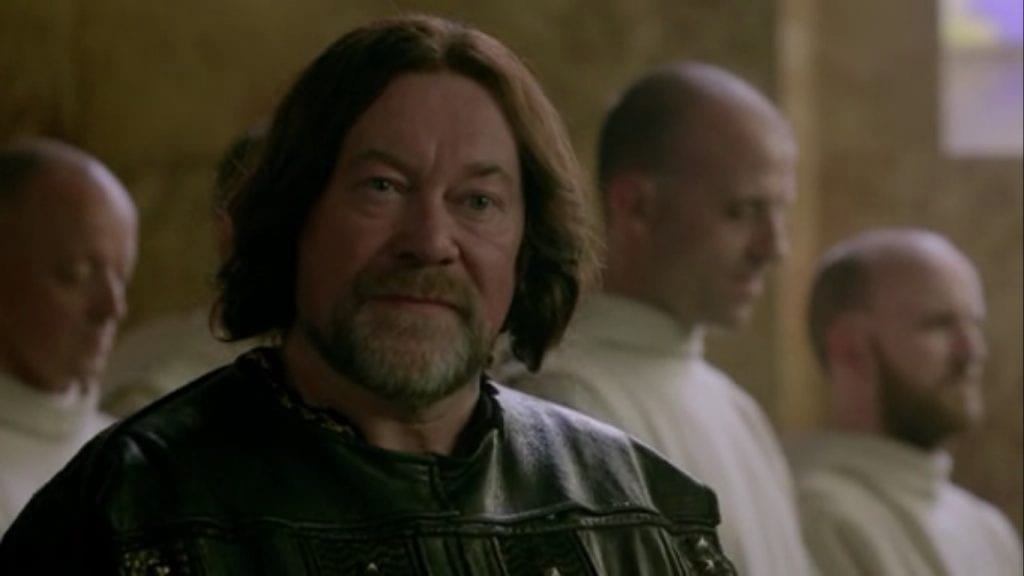
As another character loosely based on a historical figure, Count Odo was inspired by Odo who had the titles of Duke of France, Count of Paris and King of West Francia.
Odo (played by actor Owen Roe in the show) defends Western Francia bravely against Vikings’ attacks and gets chosen as the king by Western French nobles in real life.
He eventually leaves the crown to Charles the Simple (whom the Count Odo in the series serve as a count) for political reasons.
Astrid
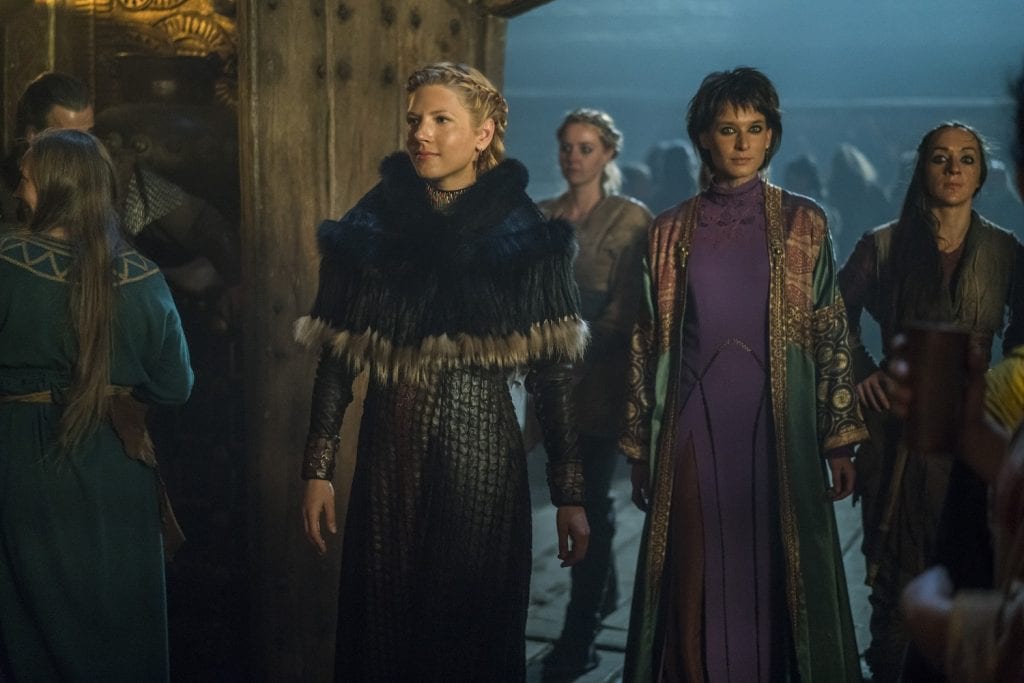
Lagertha’s love affair in season 4, Astrid, who happens to be a shieldmaiden and a skilled warrior, is also a purely fictional character. There are no records mentioning any female warrior named Astrid (played by actress Josefin Asplund) or a female love affair of Lagertha.
Kwenthrith /Cwenthryth
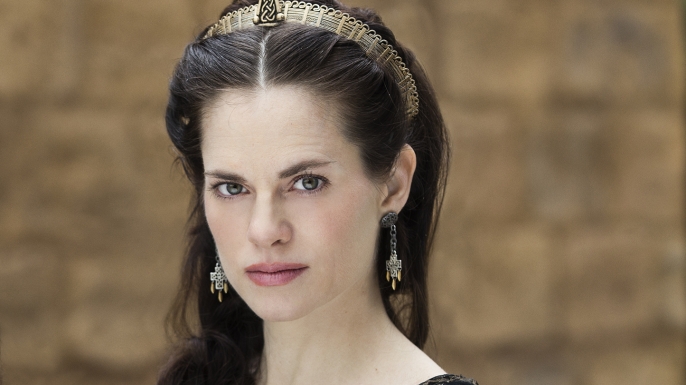
Kwenthrith of Mercia in Vikings is loosely based on Princess Cwenthryth of Mercia who lived in the 9th century (played by actress Amy Bailey in Vikings).
There is very limited information about her in the historical records none of which suggests a meeting with Ragnar Lothbrok let alone having a child (Magnus) from him.
Bishop Heahmund
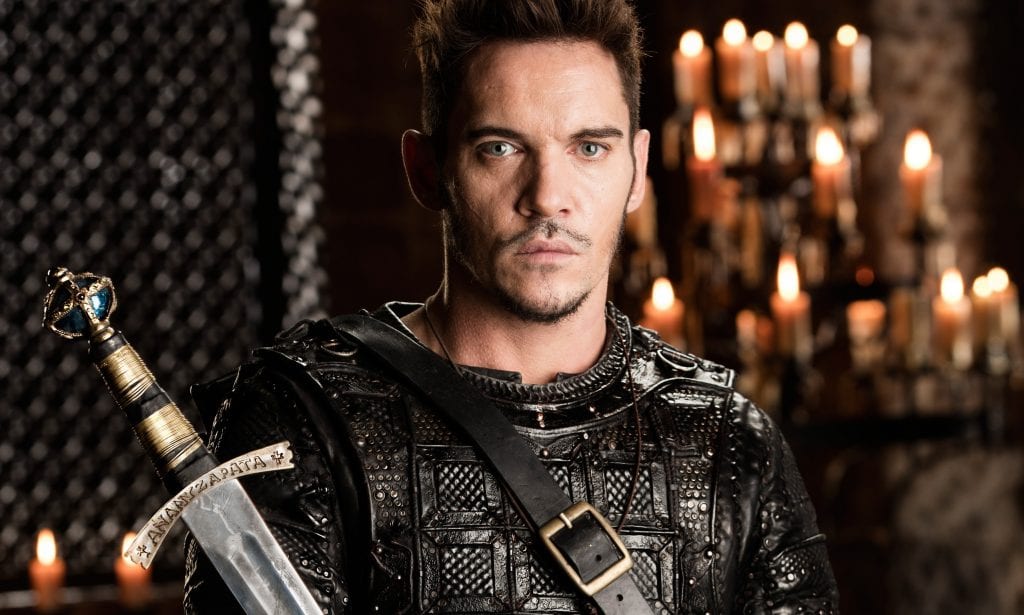
Joining the Vikings cast in season 4 finale as one of the latest additions, the character played by Jonathan Rhys Meyers, Bishop Heahmund is based on a real life clergyman.
The real Bishop Heahmund fights alongside King Æthelred of Wessex and Prince Alfred (King Egbert’s grandsons) and dies during the Battle of Marton which ended with the victory of Vikings possibly led by King Halfdan Ragnarsson (who was identified with Hvitserk by many historians).
The Battle of Marton is an important historical event as it was the battle after which Prince Alfred succeeded the throne of Wessex.
King Alfred the Great defended his kingdom, which was left as the only English kingdom that was not under Viking control at the time, and had some significant victories against the Vikings that played a very important role for the survival of England as a whole.
Liked what you read about Vikings ? Share it if you could!
